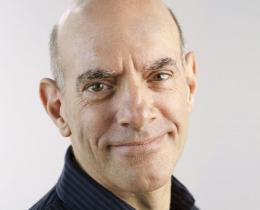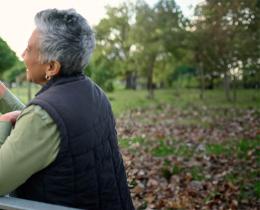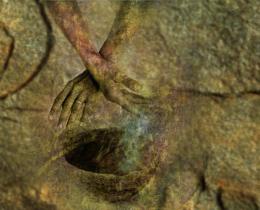Do we go it alone or make our way together? These are our two choices in making the hard journey through existence.
These choices are represented by the two prominent Buddhist traditions: Hīnayāna Buddhism, which seeks personal enlightenment (Hīnayāna means little raft), and Mahāyāna Buddhism, which seeks a mutual enlightenment with others (Mahāyāna means big raft).
Psychologist James Hillman reminds us that these distinctions are also evident in the philosophies of Sigmund Freud and Carl Jung, “Freud argued that the self is truly noncommunal, fundamentally individual. Jung said that we are each make-weights in the scales—that what you do in your psychological life tips the balance of the world one way or another.”
When hurt and confused, we can pull in and believe that we can only rely on ourselves. When thrust rawly into suffering, we are quickly opened to a larger definition of self in which we’re interdependent with others and the Whole of Life.
So we’re always choosing between the little raft and the big raft, between going it alone or making our way together. Each has its gifts and each has its burdens.
Connected or Competitive?
Our sense of community depends on our foundational understanding of life. If you believe in a world that is not connected or interdependent, but is chiefly competitive, there’s a limit to the degree of trust you can find in life, and a limit to the degree of compassion you can wholeheartedly release.
If, however, you believe in a world that is infinitely and irrevocably knit together, in which one spiritual power animates and connects all living things, then there’s no limit to the trust that you can invoke beyond your single life.
Through that trust, there is no limit to the degree of compassion you can summon toward other living things, and no limit to the kinship you can discover with all aspects of life.
Every day we’re faced with a fundamental choice-point that determines whether we can live together or not. We’re asked to value life and people over things or to subordinate life to the property and fortifications that surround us. Any religious or social system can join us or tear us apart, depending on which of these paths it supports.
When going it alone and guarding against the harshness of life, we tend to define things negatively, by what they are not, and so miss the strength in defining things by what they are.
But defining things negatively only gives us half the story. We in the West often define ahimsa as “nonviolence,” which tells us what it’s not. But to truly understand the importance of ahimsa, we have to delve into what it is, a life of engaged understanding and compassion.
Stopping violence alone will not cultivate understanding and compassion. This is why, as time went on, Gandhi further defined ahimsa as “intercommunity harmony.”
Similarly, Martin Luther King Jr. firmly believed that desegregation was not the same thing as integration. He felt that stopping segregation by itself, though necessary, would only produce a society where men are physically desegregated and spiritually segregated, where elbows are together and hearts are apart.
It gives us social togetherness and spiritual apartness. It leaves us with a stagnant equality of sameness rather than a constructive equality of oneness.
Creating Global Family
If we are to grow, if we are to move from the little raft to the big raft, we have to do more than stop violence and prejudice. We have to commit to understanding their opposites in our hearts, and accept each other as part of a global family.
Any true sense of community resides in staying committed to exploring and upholding what we are, as opposed to railing only against what we are not.
In the traditional tea ceremony in Japan, the tea houses are kept small in order to invoke humility by forcing us to leave everything extraneous outside. The contract of true learning is like a small tea house. It only lets us enter with our mind and our heart, leaving our weapons and assumptions outside so we can learn deeply.
Some say the big raft is impossible, that the Beloved Community is a fantasy, that the way of ahimsa is unrealistic. Yet, though we many never attain them, everything that matters depends on our commitment to keep reaching.
It was Sir Thomas More (1478-1535) who first used the word utopia in his 1516 book by the same name. In it, an explorer visits the island of Utopia, which means “nowhere land,” a land that can’t exist and yet is a land worth looking for.
In More’s Utopia, all things are owned in common, there is universal education for men and women, and religious differences are celebrated. While this has always seemed impossible, it’s worth the effort to try to live together in this way. The commitment to aim for our common good is a covenant of humanity.
If the creation of a Beloved Community seems daunting, what matters is the kindness we live out in trying to find it. What matters is the commitment to aim for our common good.
The Beloved Community as we imagine it may not exist, but it’s a land worth looking for. Perhaps, the heart of the Beloved Community is realized by how we live together along the way.
In 1955, after the devastation of World War II, the Japanese government authorized its Agency for Cultural Affairs to honor individuals or groups each year as Preservers of Important Intangible Cultural Properties (Jūyō Mukei Bunkazai Hojisha).
Out of unthinkable harm a way has arisen to name artists and craftsmen who keep traditions of community alive. These preservers of the intangible are popularly known as Living National Treasures (ningen kokuhō).
Being designated as a Living National Treasure is a recognition of excellence in an artistic or social field. In essence, the award establishes the recipient as a cultural ambassador, responsible for the dissemination, perpetuation, and future development of their artful form of community.
In our tense and polarized times, we especially need Living Human Treasures to preserve the important intangibles that keep us connected and benevolent, that awaken us to the inevitable fact that the world is the biggest raft of all.




